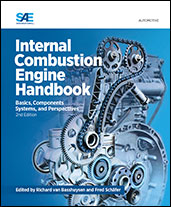Technical Paper
A Dynamic Tire Concept Model for Early Phases of Ride Comfort Development
2023-01-03
2023-01-5002
In order to correctly predict the impact of tire dimensions and properties on ride comfort in the early phases of the vehicle development process, it is necessary to fully understand their influence on the dynamic tire behavior. The currently existing models for reproducing tire forces often need many measurements for parametrization, simplify physical properties by empiric functions, or have an insufficient simulation speed to analyze many variants in the short periods of early process phases. In the following analysis, a tire concept model is presented, which utilizes relations between the static and dynamic behavior of tires in order to efficiently predict the dynamic forces in the vertical and longitudinal direction during obstacle crossing. The model allows for efficient parametrization by minimizing the number of parameters as well as measurements and ensures a high simulation speed. To realize this, initially, a selection of tires is measured on a tire test rig.

